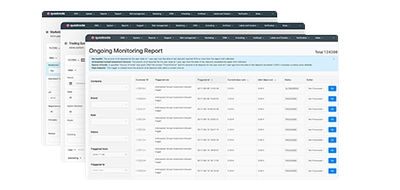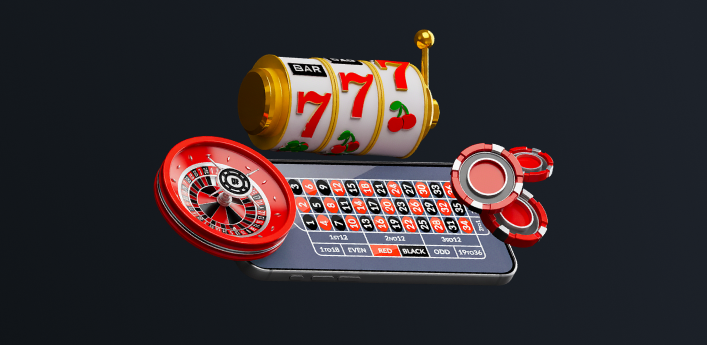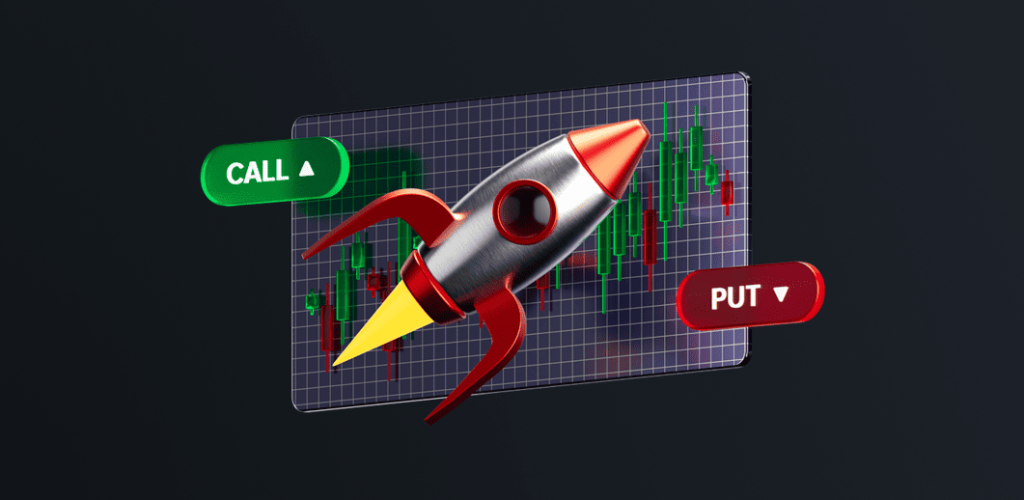Назад
Contents
Что такое PnL и как его рассчитать?


Demetris Makrides
Senior Business Development Manager

Vitaly Makarenko
Chief Commercial Officer
Прибыль и убыток (P&L) — это показатель финансового результата в трейдинге. Он показывает, получил ли трейдер прибыль или убыток по конкретной позиции за определённый период. P&L служит индикатором эффективности в режиме реального времени и является ключевым инструментом управления рисками и стратегического планирования.
Каждая торговая позиция, будь то на рынке Форекс, акций, сырьевых товаров или криптовалют, приводит к результату, который фиксируется как прибыль или убыток. Этот результат зависит от движения цены, размера позиции, а также точек входа и выхода. Отчёт о прибылях и убытках (P&L) постоянно обновляется для открытых сделок и становится окончательным после их закрытия.
Существует два основных вида прибылей и убытков: реализованные и нереализованные. Реализованная прибыль или убыток учитываются при закрытии сделки. Нереализованные, или плавающие, прибыли и убытки представляют собой текущий результат открытых позиций.
Точное понимание прибылей и убытков помогает трейдерам оценивать свою эффективность. Кроме того, они могут корректировать уровень риска и совершенствовать торговые стратегии на конкурентных рынках.
Как рассчитать прибыль и убыток в трейдинге
Прибыль и убыток (P&L) в трейдинге определяются разницей между ценой входа и выхода из позиции, умноженной на размер сделки. расчет зависит от того, является ли позиция длинной или короткой.
Для длинных позиций
Длинная позиция — это ситуация, когда трейдер покупает актив, ожидая, что он вырастет в цене.
Формула:
P&L = (Цена выхода - Цена входа) × Размер позиции
Пример:
- Купить 1 лот EUR/USD по цене 1,1000
- Продавать по 1,1050
- Размер партии = 100 000 единиц
- Прибыль и убыток = (1,1050–1,1000) × 100 000 = прибыль в размере 500 долларов США.
Для коротких позиций
Короткая позиция — это когда трейдер сначала продает, намереваясь выкупить по более низкой цене.
Формула:
P&L = (Цена входа - Цена выхода) × Размер позиции
Пример:
- Продать 1 лот GBP/USD по 1,2500
- Выкуп по цене 1,2450
- Размер партии = 100 000 единиц
- Прибыль и убыток = (1,2500–1,2450) × 100 000 = прибыль в размере 500 долларов США.
P&L может быть положительным (прибыль) или отрицательным (убыток) и изменяется в режиме реального времени по мере движения рынка.
Реализованные и нереализованные прибыли и убытки
Трейдеры часто отслеживают два типа прибыли и убытка: реализованную и нереализованную. Оба они важны для оценки эффективности счёта, но служат разным целям.
Реализованная прибыль и убыток (P&L) — это прибыль или убыток по уже закрытым позициям. После выхода из сделки результат фиксируется и добавляется к балансу счёта трейдера. Реализованная прибыль и убыток (P&L) отражают фактическую прибыль или убыток.
Нереализованные прибыли и убытки (P&L), иногда называемые плавающими P&L, формируются по открытым позициям. Они показывают, сколько трейдер получил бы или потерял бы, если бы позиция была закрыта по текущим рыночным ценам. Этот показатель постоянно меняется и влияет на доступную маржу, но не является окончательным до закрытия сделки.
Например, если трейдер открывает длинную позицию по золоту по цене 2000 долларов, а рыночная цена поднимается до 2010 долларов, нереализованная прибыль составляет 10 долларов за единицу. Если сделка закрыта, эта сумма становится реализованной.
Инструменты и платформы для отслеживания прибылей и убытков
Большинство современных торговых платформ предлагают встроенную функцию отслеживания прибылей и убытков в режиме реального времени. Эти инструменты помогают трейдерам отслеживать эффективность, управлять рисками и оценивать стратегии без необходимости ручных расчётов.
- Торговая платформа QuadCode White Label Quadcode предлагает готовое решение для торговли несколькими активами с интегрированным отслеживанием прибылей и убытков и встроенным калькулятором прибылей и убытков. Трейдеры могут отслеживать как реализованные, так и нереализованные прибыли и убытки в режиме реального времени, получая подробную аналитику по каждой сделке и индикаторы влияния на маржу.
- MetaTrader 4 и 5 (MT4/MT5) - Обе платформы отображают прибыль и убыток в режиме реального времени в окне терминала. Трейдеры могут просматривать открытые и закрытые сделки, плавающую прибыль и убыток, а также общий баланс счета. Отчёты можно экспортировать для дальнейшего анализа.
- cTrader - Предлагает расширенную аналитику, включая разбивку прибылей и убытков по символу, длительности сделки и объёму. Интерфейс позволяет подробно отслеживать реализованную и нереализованную прибыль, а также визуальные графики эффективности.
- TradingView (интеграция с брокером) - TradingView, в первую очередь используемый для построения графиков, поддерживает отслеживание прибылей и убытков при подключении к поддерживаемым брокерам. Панель портфеля отображает текущие позиции, прибыль и процентный прирост или убыток.
- Собственные брокерские платформы – Такие брокеры, как IG, Interactive Brokers и Saxo Bank, предлагают специализированные платформы со встроенным мониторингом прибылей и убытков, расширенной торговой отчётностью и отслеживанием использования маржи. Некоторые предлагают загружаемые отчёты для налоговой отчётности и исторического анализа.
- Сторонние инструменты аналитики - Такие платформы, как Myfxbook и FX Blue, предлагают панели мониторинга эффективности, импортирующие сделки от различных брокеров. Эти инструменты дают трейдерам более глубокое понимание таких показателей стратегии, как процент прибыльных сделок, средняя доходность, просадка и соотношение риска к доходности.
Использование правильных инструментов помогает трейдерам быть в курсе событий и принимать решения на основе данных. Постоянное отслеживание прибылей и убытков, будь то с помощью торгового терминала или сторонних аналитических инструментов, критически важно для управления эффективностью.
Различные типы отображения прибылей и убытков на торговых платформах
Торговые платформы предлагают различные способы просмотра прибылей и убытков, помогая трейдерам оценивать эффективность с разных точек зрения. Понимание этих способов помогает более точно интерпретировать данные.
- P&L в валюте против пунктов - Некоторые платформы отображают прибыль и убыток в базовой валюте счета, в то время как другие отображают ее в пипсы . Пипсовые индикаторы помогают трейдерам сосредоточиться на движении рынка, не отвлекаясь на размер позиции или кредитное плечо.
- Совокупный и совокупный P&L по сделке - Кумулятивный P&L суммирует прибыли и убытки за выбранный период. P&L по каждой сделке разбивает её по отдельным сделкам. Оба варианта полезны, в зависимости от того, оцениваете ли вы общую эффективность или анализируете конкретную стратегию.
- Ежедневные, еженедельные, ежемесячные просмотры - Большинство платформ позволяют фильтровать по временному интервалу. Это помогает выявлять тенденции динамики и периоды высокой или низкой волатильности. Трейдеры часто сравнивают ежемесячные прибыли и убытки, чтобы оценить стабильность.
Эти варианты — это больше, чем просто варианты форматирования. Они определяют оценку стратегии, ведение журнала и долгосрочное повышение эффективности.
Как прибыль и убыток влияют на маржу и кредитное плечо
Прибыль и убытки напрямую влияют на баланс счета трейдера, что, в свою очередь, влияет на доступную маржу и кредитное плечо. Поскольку стоимость сделок колеблется, нереализованные прибыли и убытки изменяют баланс счета в режиме реального времени.
Когда позиция приносит убыток, средства на счёте уменьшаются. Это уменьшает свободную маржу — сумму, доступную для открытия или поддержания дополнительных сделок. Если убыток становится слишком большим, брокер может потребовать от трейдера внести дополнительные средства. В крайних случаях открытые позиции могут быть ликвидированы для предотвращения дальнейших убытков.
С другой стороны, прибыль увеличивает капитал на счёте и свободную маржу, обеспечивая большую гибкость. Это может способствовать увеличению кредитного плеча или размера позиции, хотя и увеличивает риск, если им не управлять.
Многие торговые платформы отображают в режиме реального времени данные о капитале, использованной и доступной марже, а также данные о прибылях и убытках. Это помогает трейдерам отслеживать, как текущие сделки влияют на их способность удерживать позиции и соблюдать маржинальные требования брокера.
Использование P&L для оптимизации стратегии
Прибыль и убыток — это не просто показатель эффективности, но и инструмент для улучшения торговой стратегии. Анализ подробных данных о прибылях и убытках может выявить закономерности и возможности для совершенствования.
- Определите лучшие и худшие сделки - Трейдеры могут использовать анализ прибылей и убытков, чтобы увидеть, какие сетапы или рынки приносят наибольшую прибыль. Это помогает сосредоточить усилия на высокоэффективных стратегиях.
- Настройте параметры риска - Частые небольшие убытки или крупные просадки указывают на необходимость корректировки стоп-лоссов или размеров позиций. Показатели прибылей и убытков показывают, как решения о рисках влияют на итоговый результат.
- Оцените частоту торговли Слишком много сделок с низкой прибылью может быть признаком переторговки. Анализ среднего P&L на сделку помогает оценить, будет ли эффективнее меньшее количество сделок, но более избирательные.
Последовательно анализируя данные о прибылях и убытках, трейдеры получают представление о том, как улучшить ситуацию, а не только о том, сколько они заработали или потеряли.
Распространенные ошибки при интерпретации отчета о прибылях и убытках
Многие трейдеры неправильно интерпретируют данные о прибылях и убытках, что может привести к принятию неверных решений. Хотя математика проста, контекст и время получения данных о прибылях и убытках имеют значение. Избегание этих распространённых ошибок помогает защитить капитал и улучшить долгосрочные результаты.
Игнорирование нереализованных убытков
Некоторые трейдеры фокусируются только на реализованных прибылях и убытках, игнорируя плавающие убытки. Это создаёт ложное ощущение прибыльности. Открытые убытки всё равно уменьшают капитал счёта и могут привести к проблемам с маржой, если их не контролировать.
Непонимание влияния рычага
Результаты P&L значительно увеличиваются при использовании высокого кредитного плеча. Небольшое движение рынка может привести к значительной прибыли или убытку. Трейдеры часто недооценивают, насколько быстро могут меняться нереализованные P&L в условиях кредитного плеча.
Непонятные значения пунктов и лотов
Неправильный расчёт прибыли и убытков из-за ошибок в стоимости пункта — распространённая проблема среди новичков. Для точных расчётов размер пункта и размер лота должны быть согласованы, особенно в парах, отличных от доллара США, или экзотических валютах.
Обзор спреда и комиссий
На прибыль и убытки влияют торговые издержки. Игнорирование влияния спредов, свопов и комиссий может привести к завышению прибыли. Всегда учитывайте эти факторы при анализе эффективности.
Невозможность корректировки размера позиции
Прибыль в долларах мало что значит без контекста. Прибыль в 100 долларов по небольшой сделке может отражать гораздо более высокую процентную доходность, чем та же прибыль по более крупной сделке. Оцените прибыли и убытки как в абсолютном, так и в относительном выражении.
Почему понимание прибылей и убытков важно для долгосрочного успеха
Прибыль и убытки — это больше, чем просто цифра. Это основа каждого торгового решения. Трейдеры, которые регулярно анализируют свои прибыли и убытки, понимают, что работает, а что нет. Это понимание помогает уменьшить эмоциональный настрой и сосредоточиться на стратегиях, подкрепленных данными.
Точное отслеживание прибылей и убытков выявляет закономерности, например, какие инструменты приносят наибольшую прибыль или какие торговые схемы оказываются неэффективными. Это также способствует более эффективному управлению рисками. Если убытки растут быстрее прибылей, трейдер понимает, что пришло время скорректировать размер позиции, настройки стоп-лосса или рыночную экспозицию.
Без чёткого понимания прибылей и убытков трейдеры часто недооценивают доходность. Несколько прибыльных сделок могут скрывать более глубокие проблемы, такие как высокая просадка или чрезмерный риск. Долгосрочная стабильность зависит от дисциплинированного анализа каждой прибыли и убытка.
Трейдеры, которые серьёзно относятся к прибыли и убыткам, как правило, совершают меньше импульсивных сделок, придерживаются более структурированных стратегий и со временем увеличивают свой счёт. Это становится не просто показателем, а инструментом выживания на волатильных рынках.
Заключение
Прибыль и убыток (P&L) — важнейший показатель эффективности торговли. Он показывает, работают ли ваши стратегии. Он также показывает, как ваши сделки влияют на ваш счёт с течением времени. От базовых расчётов до отслеживания в режиме реального времени, P&L служит основным инструментом для каждого трейдера.
Понимание того, как читать и управлять прибылями и убытками, помогает избежать распространённых ошибок. Кроме того, это способствует принятию более взвешенных решений и обеспечивает долгосрочную стабильность. Независимо от того, торгуете ли вы вручную или с помощью автоматизированных систем, точное отслеживание прибылей и убытков критически важно для роста и защиты капитала.
FAQ
P&L означает прибыль или убыток. Он показывает, сколько трейдер зарабатывает или теряет по позиции. Он может быть реализованным (от закрытых сделок) или нереализованным (от открытых сделок).
Для длинных позиций вычтите цену входа из цены выхода и умножьте на размер позиции. Для коротких позиций измените порядок в обратном порядке.
Реализованная прибыль и убыток отражают фактическую прибыль или убыток от закрытых сделок. Нереализованная прибыль и убыток показывают текущую стоимость открытых позиций на основе текущих цен.
Отчёт о прибылях и убытках влияет на баланс вашего счёта. Убытки сокращают доступную маржу, что может привести к маржин-коллам. Прибыль увеличивает баланс и гибкость торговли.
Такие платформы, как MetaTrader, cTrader и TradingView, отображают данные о прибылях и убытках в режиме реального времени. Такие инструменты, как Myfxbook, предлагают более глубокую аналитику, импортируя историю торговли с подключенных счетов.
Обновлено:
18 июня 2025 г.




